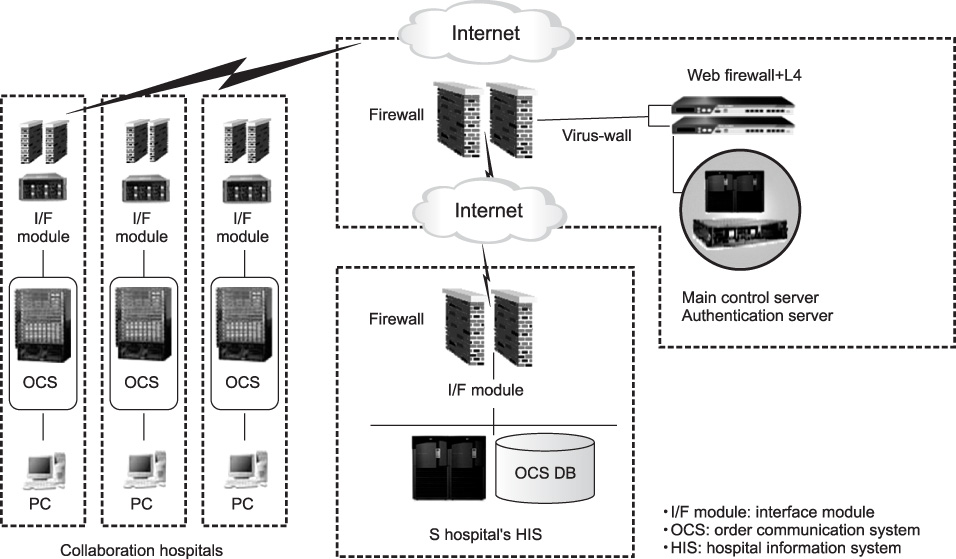J Korean Soc Med Inform.
2009 Sep;15(3):341-350.
Development of a Personal Health Record System Based on USB Flash Drive and Web Service
- Affiliations
-
- 1Department of Medical Engineering, College of Medicine Yonsei University, Korea. knh@yuhs.ac
- 2Department of Rehabilitation Medicine, School of Medicine, Ewha Womans University, Korea.
- 3Center for Construction of Uniquitous Medical Hub, Korea.
Abstract
OBJECTIVE
The development of information communication technology (ICT) and the demand for managing the healthy lives of individuals are accelerating the informatization of the health and medical field. Considering this environment and the needs of the individual, this paper has designed and developed a web and mobile storage device-based personal health record (PHR) system that individuals can manage by themselves anywhere, anytime, whether on-line or off-line. Based on the experience of implementing the system, its development method, results, and relevant technical issues are described. SYSTEM DESIGN AND DESCRIPTION: This system is implemented to manage PHR, including vital signs and ingested/consumed calories for a lifetime by connecting a PHR-integrated web server to each hospital's information system, and the PHR programs installed in the individual's PC or USB flash memory drive. To achieve this, an interface module, web server system, and PHR viewer program for individuals are developed.
RESULTS
When it is off-line, the PHR program is operated to inquire the data saved in the DB, and the self-measured information can be inputted. When it is on-line, it calls the web service function to inquire the medical information, including hospital visit history, prescription history, diagnosis result, image inspection result and medical treatment result.
CONCLUSION
This system connects home and mobile healthcare to hospitals but minimizes information leakage because the data is not accumulated. By loading a plug & play, PHR viewer to an easy-to-carry mobile storage device, the systems supports a sustainable health management.
Keyword
MeSH Terms
Figure
Reference
-
1. Institute of Medicine. The computer-based patient record: an essential technology for patient care. 1991. Washington, D.C.: National Academy Press;1–20.2. National Committee on Vital and Health Statistics. Personal health records and personal health record systems: a report and recommendations from the national committee on vital and health statistics. 2006. Washington, D.C.: 11–19.3. Roger AE, Robinson DL. EMR and PHR: healthcare's ultimate connection. For The Record. 2006. 18(25):18–19.4. Mon DT. PHR, EHR: what's the difference? Journal of AHIMA. 2005. 76(10):60–61.5. The Personal Health WG. A public-private collaborative: final report. Markle Foundation's Connecting for Health. 2003. 1–58.6. WG on Policies for Electronic Information Sharing Between Doctors and Patients. Connecting Americans to their healthcare: final report. Markle Foundation's Connecting for Health. 2004. 1–145.7. AHIMA. The role of the personal health record in the EHR. Journal of AHIMA. 2005. 76(7):1–16.8. The National Alliance for Health Information Technology. Defining key health information technology terms. 2008.9. Miller HD, Yasnoff WA, Burde HA. Personal health records: theessential missing element in 21st century healthcare. 2009. Chicago (IL): HIMSS;28.10. Stratis Health. Health information technology service: PHR technology. 2009. Aging Services of Minnesota;1–3.11. Tang PC, Lansky D. The missing link: bridging the patient-provider health information gap. Health Aff (Millwood). 2005. 24(5):1290–1295.
Article12. Tang PC, Ash JS, Bates DW, Overhage JM, Sands DZ. Personal health records: definitions, benefits, and strategies for overcoming barriers to adoption. J Am Med Inform Assoc. 2006. 13(2):121–126.
Article13. Endsley S, Kibbe DC, Linares A, Colorafi K. An introduction to personal health records. Fam Pract Manag. 2006. 13:5.14. Waegemann CP. Testimony to national committee on vital and health statistics regarding personal health records. 2002. Chicago: U.S. DHHS;2–3.15. AHIMA e-HIM Personal Health Record Work Group. The role of the personal health record in the EHR. J AHIMA. 2005. 76(7):64A–64D.16. Julie W, Beth F. Health records for the people: touting the benefits of the consumer-based personal health record. J AHIMA. 2005. 76(10):28–32.17. Cohn SP. NCVHS. Letter to Secretary Leavitt on personal health records [letter]. 2005. Washington, D.C.: U.S. DHHS;20201.18. Nash DB. Electronic personal health records come of age. Am J Med Qual. 2006. 21(3):5–15.
Article19. AMIA. The transformative potential of integrated personal health records. 2006. Bethesda, MD: Am Med Inform Assoc;1–16.20. Available at: http://www.u-smis.com. Accessed August 31, 2009.21. Miller HD, Yasnoff WA, Burde HA. Personal health records: the essential missing element in 21st century healthcare. 2009. Chicago (IL): HIMSS;52–53.22. AHIMA. Common Data Elements in the PHR. 2005. 1–16.
- Full Text Links
- Actions
-
Cited
- CITED
-
- Close
- Share
- Similar articles
-
- A Development of Prototype Personal Health Record System based on Continuity of Care Document
- The Remote Health System utilizing Wireless Communication of Personal Health Information
- Smart Information System for Gachon University Gil Hospital
- The Development and Evaluation of Web-based Flash Content for Fighting Spirit Promotion in Patients with Cancer
- Development of a User Centered Web Site for Mental Health Management in Adolescents







